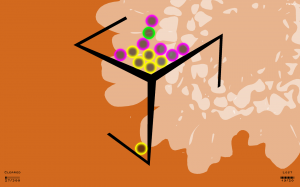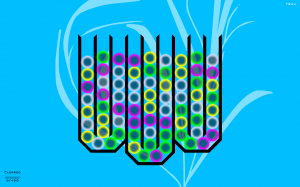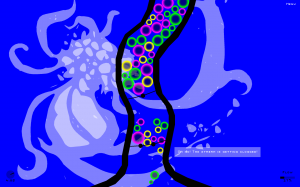WoW: Battleground
I’ve just spent some time pursuing exploration and (mostly low-level) quests in the Eastern Kingdoms, where the story is dominated by the undead. I’ve thoroughly conquered the Hillsbrad Foothills, Arathi Highlands, and Western Plaguelands zones — territories I had already explored to various degrees, but now they’re not just explored but exhausted. In the process, I discovered the entrance to the Scholomance, a dungeon I had explored via the Dungeon Finder some time previously. That keeps happening: I do a dungeon, and only some time later do I receive the dungeon’s context. Sometimes there’s even a quest to enter the dungeon and talk to the questgiver immediately inside, who would then give me quests if I hadn’t already done them.
Quests to enter dungeons are of course a way that the game tries to get you to try out all of the game modes. In Arathi Highlands, I encountered another such for the first time: a quest involving a PvP “battleground” zone, where Horde players clash with Alliance players in an attempt to capture strategic points. To do the quest, you have to register for a battle on the Arathi Basin map and “assault” four specific capture points (each of which corresponds to an important building: a stable, farmhouse, etc). What does “assault” mean? Well, each capture point has a flag indicating which side controls it; click an enemy flag and stand still for several seconds — long enough to give any enemies still present a chance to kill you — and you start a one-minute countdown, at the end of which the point becomes yours. The character who performs this action is reported to the world as assaulting the point. However, I only did this once during my time in the Basin, and somehow managed to get quest credit for assaulting all four points, so there’s clearly more to it than that. Perhaps just standing near the flag while someone else assaults it counts. Similarly, the scoreboard at the end of my first battle credited me with a number of “honorable kills” despite not having actually killed anyone.
Battlegrounds, like dungeons, are instanced zones — areas cut off from the rest of the world, existing independently for each set of players using the zone at once. The only way to enter them is by queueing up through an interface similar to the Dungeon Finder. For historical reasons, you can access this interface by talking to an NPC who stands next to the gate that used to lead into a battleground (but which is now impassible), but you can also access it via an icon on the action bar, right next to the Dungeon Finder icon. This strikes me as a very good change: if I understand correctly, it used to be that entering a battleground involved going to a specific location and then waiting there for enough people to queue up to fill an instance. Being able to hop on the queue anywhere means that I can spend that time exploring instead of sitting around bored. It makes me think of the complaints leveled against “virtual world” interfaces like Playstation Home, about how they needlessly impose the limitations and inconveniences of the real world. I suppose it’s a tough call to make in a MMO, where the sense of your avatar’s physical presence in the shared gameworld is a big part of the game’s appeal, but I’m glad that people are figuring out when sticking to the virtual model does and doesn’t enhance the player experience and making adjustments accordingly.
Only five players at a time can enter a dungeon instance. Battlegrounds support — indeed, require — larger teams than that. Consequently, the interface for showing your team is different: denser, more abstract, less intuitive. It’s a grid of green blocks, showing everyone’s health bars. It took me a little while to realize that characters who were in range of my healing spells were displayed in a brighter shade of green; once I noticed this, I was much more effective as a healer. The most satisfying moments were the times I managed to charge in to the rescue, coming into a skirmish in progress and quickly filling up the emptying life bars, then plopping down some totems to give my team an extra edge. I mean, okay, a Restoration shaman isn’t the best team member for a battleground, and I should really learn how to use my second specialization if I decide to pursue this side of the game further. But at least I managed to be useful sometimes.
Battleground mode is definitely the part of the game that plays the most like what you’d expect from WoW‘s basic premise: that it’s Warcraft played from the inside. But it reminds me even more of Team Fortress 2. There’s a similar flow, a similar seesawing of power, of people rushing around from point to point in small groups. Except, of course, that at the lowest level, it’s much more elaborate than TF2. You get the full range of WoW‘s myriad special abilities in play here, and as baroque as TF2 is becoming, WoW has a two-year head start on it. I’m impressed anew with what Blizzard is attempting here. Battleground mode plays so utterly differently from quests or dungeons (where your only opponents are computer-controlled sacrifical lambs, built for beating) that the idea of building such a complex system, and periodically extending it, while keeping it balanced in both of these contexts seems impossibly difficult. And I’m sure that a more experienced player could tell me all about how they failed in the attempt — certainly the general chatter within the game is full of fannish complaints about design decisions. But regardless, I admire the attempt.
 Comments(3)
Comments(3)


